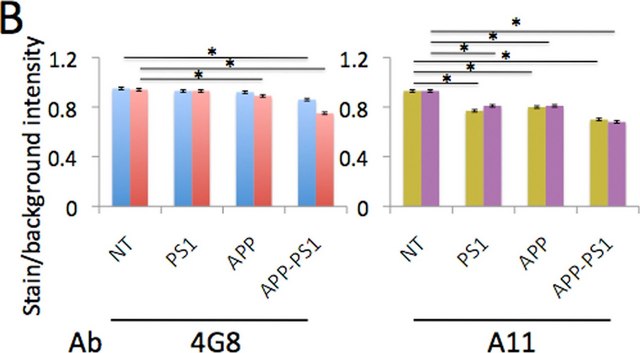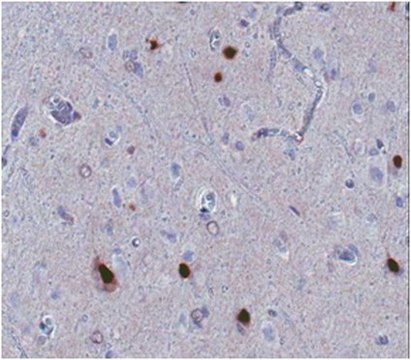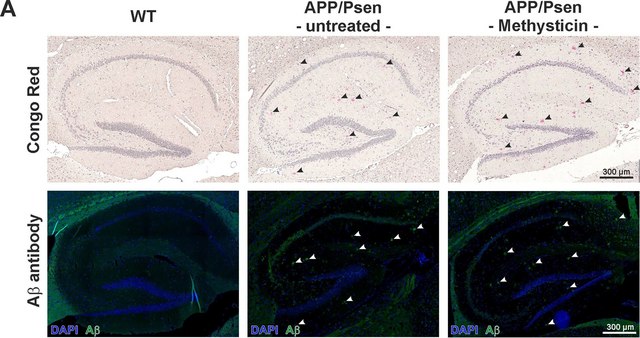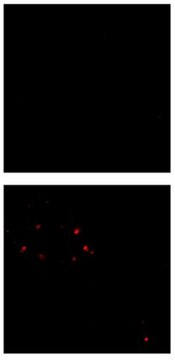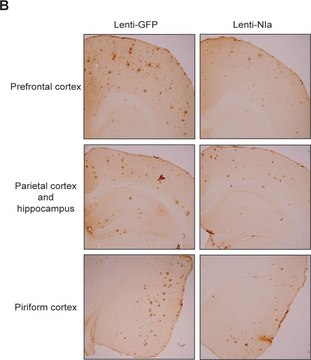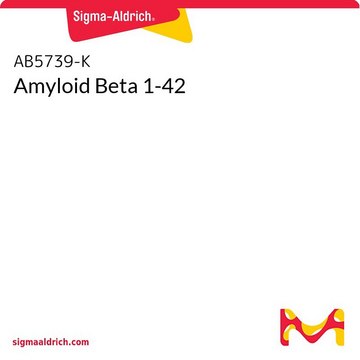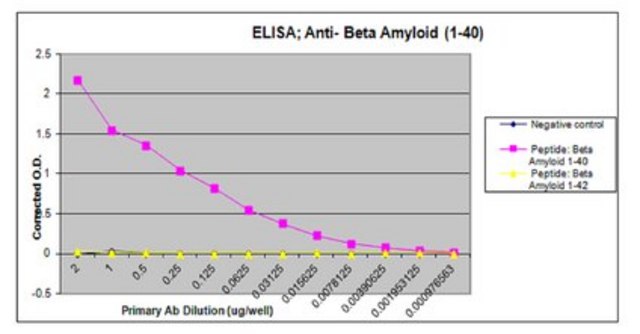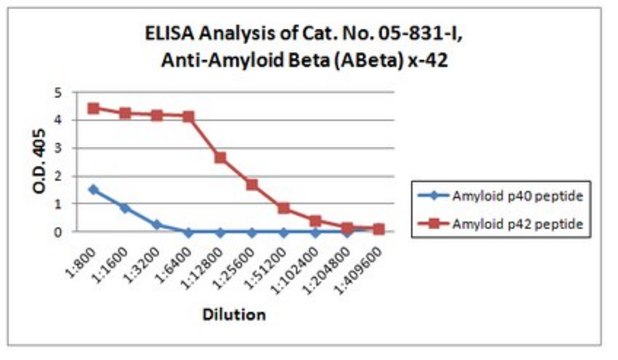MABN879
Anti-phospho-Amyloid beta Antibody (Ser26), clone 5H11C10
clone 5H11C10, from mouse
别名:
Aβ peptide, Ser26 phosphorylated, Abeta peptide, Ser26 phosphorylated, Amyloid β peptide, Ser26 phosphorylated, Aβ1-40, Ser26 phosphorylated, Aβ1-42, Ser26 phosphorylated, Abeta1-40, Ser26 phosphorylated, Abeta1-42, Ser26 phosphorylat
登录查看公司和协议定价
所有图片(2)
About This Item
UNSPSC代码:
12352203
eCl@ss:
32160702
推荐产品
一般描述
Amyloid beta A4 protein (UniProt P05067; also known as ABPP, Alzheimer disease amyloid protein, Amyloid precursor protein, APP, APPI, Cerebral vascular amyloid peptide, CVAP, PN-II, PreA4, Protease nexin-II) is encoded by the APP (also known as A4, AD1) gene (Gene ID 351) in human. Amyloid precursor protein (APP) is initially produced with a signal peptide sequence (a.a. 1-17), the removal of which yields the mature protein with a large extracellular portion (a.a. 18-699), followed by a transmembrane segment (a.a. 700-723) and a cytoplasmic (a.a. 724-770) tail. APP can be further processed by the α-, β-, and γ-secretases in two alternative processing pathways. In the non-amyloidogenic pathway, APP is first cleaved by the plasma membrane-localized α-secretase to generate an N-terminal extracellular sAPPα fragment (a.a. 18-687) and a membrane-bound C-terminal fragment C83 (CTFα), which can be further cleaved by γ-secretase to produce a non-toxic small peptide p3 and a cytoplasmic APP intracellular domain (AICD). In the amyloidogenic pathway, APP undergoes β-cleavage in BACE-1 (β-site APP-cleaving enzyme)-enriched endosomes to generate an N-terminal extracellular sAPPβ fragment (a.a. 18-671) and a membrane-bound C-terminal fragment C99 (CTFβ). Subsequent cleavage of C99 by γ-secretase releases the amyloid β peptides, Aβ1-42 (672-713) & Aβ1-40 (672-711), and AICD. Aβ accumulation in the cortical and hippocampal regions of the brain is a major pathological feature of Alzheimer′s disease (AD). Aβ serine phosphorylation is shown to promote Aβ aggregation into oligomeric and fibrillar assemblies and to prevent Aβ proteolytic clearance by certain proteases.
特异性
Clone 5H11C10 recognizes Aβ1-40 and Aβ1-42 peptides with phosphorylated Ser26, but not the non-phosphorylated peptides.
免疫原
KLH-conjugated linear peptide corresponding to human amyloid beta peptide target region sequence with phosphorylated Ser26.
应用
Anti-phospho-Amyloid beta (Ser26), clone 5H11C10, Cat. No. MABN879, is a highly specific mouse monoclonal antibody, that targets amyloid beta peptides Ser26 phosphorylation and has been tested in ELISA, Immunofluorescence, Western Blotting.
Western Blotting Analysis: 2 µg/mL from a representative lot detected monomeric and dimeric forms of synthetic A 1-40 peptide with phosphorylated Ser26, but not the non-phosphorylated A 1-40 peptide (Courtesy of Dr. Kumar Sathish, University of Bonn, Germany)
Western Blotting Analysis: 2 µg/mL from a representative lot detected Ser26-phosphorylated oligomeric amyloid beta (pA ) peptides in brain extracts from 8-month old APP/PS1KI transgenic mice, but not in extracts from age-matched non-transgenic mice (Courtesy of Dr. Kumar Sathish, University of Bonn, Germany).
Note: Formic acid (88%) treatment following heat retrieval is recommended for immunohistochemical detection of aggregated intraneuronal Abeta peptides in brain sections (Kumar, S., et al. (2013). Acta Neuropathol. 125(5):699-709; Christensen, D.Z., et al. (2009). Brain Res. 1301:116-125).
Western Blotting Analysis: 2 µg/mL from a representative lot detected Ser26-phosphorylated oligomeric amyloid beta (pA ) peptides in brain extracts from 8-month old APP/PS1KI transgenic mice, but not in extracts from age-matched non-transgenic mice (Courtesy of Dr. Kumar Sathish, University of Bonn, Germany).
Note: Formic acid (88%) treatment following heat retrieval is recommended for immunohistochemical detection of aggregated intraneuronal Abeta peptides in brain sections (Kumar, S., et al. (2013). Acta Neuropathol. 125(5):699-709; Christensen, D.Z., et al. (2009). Brain Res. 1301:116-125).
质量
Identity Confirmation by Isotyping Test.
Isotyping Analysis: The identity of this monoclonal antibody is confirmed by isotyping test to be IgG1κ.
Isotyping Analysis: The identity of this monoclonal antibody is confirmed by isotyping test to be IgG1κ.
目标描述
~4/8 (monomer/dimer) and >188 (oligomer) kDa observed. 4.514/9.028 kDa (Abeta1-42 monomer/dimer), 4.330/8.660 kDa (Abeta1-40 monomer/dimer) calculated. Uncharacterized bands may be observed in some lysate(s).
外形
Format: Purified
其他说明
Concentration: Please refer to lot specific datasheet.
未找到合适的产品?
试试我们的产品选型工具.
储存分类代码
12 - Non Combustible Liquids
WGK
WGK 1
我们的科学家团队拥有各种研究领域经验,包括生命科学、材料科学、化学合成、色谱、分析及许多其他领域.
联系技术服务部门
